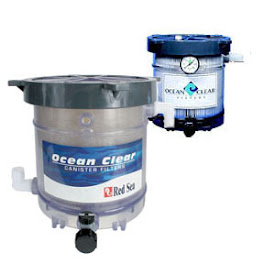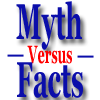UV Sterilizer Questions/Myths Answered for Pond & Reef Aquarium
Updated 4-6-19
More UV Sterilizer Questions/Myths Answered
In this post I will answer two questions (or possibly “myths”) about the use of UV Sterilizer in Aquariums and Ponds based on email and phone questions I often get.
• Filter placement in relation to UV Sterilizer in ponds.
• Danger of UV Sterilizers to copepods in reef aquariums.
Another article on sterilization in ponds:
Pond Care Information
ADVERTISEMENT:
(1) Question: Is the UV best placed after or before a filter in a pond?
This question is myth based as there are valid reasons for both applications.
However based on my own use and controlled tests using UV Sterilizers with filters before, after, or not at all, the answer of using the UV Sterilizer after the filter is the better choice.
Let me explain further; when a UV Sterilizer/Clarifier is placed BEFORE a pond filter with no pre-filtration, you do catch “clumped” algae coming from the UV Sterilizer.
This is even more noteworthy when a UV is run a flow rate over 30-35 gph per watt as this higher flow rate will generally not kill algae outright, rather “clump” the algae where it will be expelled from the UV Sterilizer into the pond water column.
Otherwise, this "clumped algae" then it either falls to the bottom of the pond becoming part of the organic mulm/detritus and/or may be picked up by any existing pond pump and filter and removed.
This is the ONLY reason to place a filter after a UV Sterilizer in pond applications.
With previous paragraph in mind, the generally better way to utilize a filter with a UV Sterilizer is to place the filter prior to the UV Sterilizer.
The reason is that turbidity in the water will lower UV Sterilizer effectiveness, and sometimes (based on my tests) to levels that render the UV Sterilizer ineffective.
This often results in the misinformed comment that UV Sterilizers do not work (based on emails and phone calls).

The other reason for pre-filtration of pond water is I have often have had success in initial clarification of pond water with no pre-filtration, but over time (& sometimes only a few weeks), sludge will build up in the UV Sterilizer.
Often this sludge builds up in recesses around the UV Bulb or quartz sleeve, rendering the UV Sterilizer/Clarifier useless.
This does not mean that pre-filtration does not prevent sludge from building, as it does not, but it most definitely slows down the accumulation of sludge, as well the time it takes to buildup sludge in your pond UV Sterilizer depends on water turbidity, algae, bio load and obviously the quality of your pre-filter.
Where to get:
UV Bulbs; Premium High Efficiency (not the low output UV lamps commonly sold on Amazon or eBay)
Quartz Sleeves
Pond UV Sterilizers
I should note that having both a pre-filter and a post filter (such as a DIY Bio falls or similar filter that fits into the water return prior to re-entering the pond) would be an excellent combination.
(2) Question: Will a UV Sterilizer kill off my beneficial copepod & other crustaceans colonies in my reef tank?
Although not as common a question as the previous question, it still crops up from time to time and I have much harder time understanding why otherwise quite advanced reef keeper fall for what amounts to a UV Sterilizer myth.
As well, my controlled studies admittedly did not include exact counts of copepods with different levels of UV Sterilization, it did show that copepod colonies when properly established never diminished with UV Sterilizer use in reef tanks.
Study Reference:UV Sterilization Studies
There is simple explanation for this result; that is most copepods do not occupy the water column in a healthy colony.
What is a healthy colony?
This is a matter of opinion or experience, but from my perspective a healthy colony is “housed” in large piles of live rock crumbles where many fish such as Mandarin Gobies will seek them out.
As well if you are using a Refugium and want to be certain that all of the copepods/ crustaceans that spill out into the aquarium are not killed, then be sure your UV is on its own filter/pump and not returning water to the aquarium using the same return line as the Refugium.
Finally whenever you dose your aquarium with certain live products such as live planktonic algae or infusoria, you should turn off the UV sterilizer or use a timer that is tied to certain cycles or automatic dosing.
 My final comment to this amounts to another aquarium keeping myth.
My final comment to this amounts to another aquarium keeping myth.
That is I have had clients/customers that have stood by this myth describe or show me their filter system and I have seen (or had them describe) several of these filter systems that employ micron filters (such as the Ocean Clear) that can easily trap copepods in their micron filters much more effectively than a UV Sterilizer can kill copepods.
In particular adult copepods for which a UV Sterilizer would have to run well under 10 gph per watt to have any chance of destroying any “pods” that get caught in the sterilizer.
As well pre-filtration which should be used in any UV Sterilizer application will trap most adult copepods from entering the Sterilizer.
What makes me laugh here is that these same aquarists often had healthy copepod colonies with the use of these Micron Filters.
I would explain to them that if these filters did not destroy their “pod” colonies, a UV Sterilizer would not either!
I should note that I am not against the use of these micron filters; in fact I think are excellent compliments to other aquarium filters, live rock, and healthy deep sand beds.
Please see this article for more about UV Sterilization and how it works:

UV Sterilization
Recommended Reading:

Common Aquarium Keeping Myths
Labels: Aquarium, Beneficial Bacteria, Copepods, Copepods UV use, Pond, UV after filter, UV before filter, UV Bulbs, UV Myths, UV Sterilizer

 UV Sterilization in Aquariums and Ponds; How it works
UV Sterilization in Aquariums and Ponds; How it works


 TMC PRO Pond 110 Watt
TMC PRO Pond 110 Watt